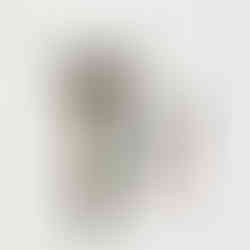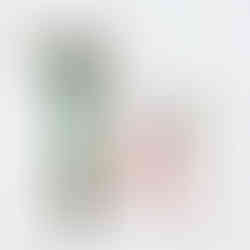Why I Avoid Acrylic Paints
- megumiwat
- Feb 18, 2024
- 3 min read
and I want all schools to stop using it, if I had my way :)
Acrylic paint is convenient. It covers thickly, dries quickly, and doesn't have a toxic smell. I used to use acrylic paint, especially when I was in Uni studying graphic design. It goes on flat on any surface and does not bleed, allowing to create sharp lines and edges.
But I did not know what the acrylic paint was made of, and it did not even occur to me (back in the 90's) that it may be bad for the environment.
What is acrylic paint?
Acrylic paint is made of pigment suspended in acrylic polymer emulsion and plasticizers, silicone oils, defoamers, stabilizers, or metal soaps. It is water-based, and dries quickly to near permanence. It is pretty much colored plastic paste drying to a film of plastic.
Why do I avoid it?
I have acrylic paint at home. I use it to paint my stick critters. I don't think I can paint them with anything else. Its quality and convenience has its place.
The biggest problem with acrylic paint is the clean-up. Since acrylic paint is water-based, we use it with water, with a jar of water beside us to rinse the brushes. When we finish painting, we dump the dirty water in the sink, wash the brushes in the sink, and if using a plastic palette, wash it in the sink. Where does all that water containing micro and nano plastics go? Some of it may get filtered out at a wastewater treatment plant, but not all, if any is actually filtered.
The treated wastewater is released into creeks, rivers and oceans in Australia, and into local waterways for drinking water, irrigation, and sustaining aquatic life in the United States. So wouldn't you want to make sure there is minimal micro and nano plastics in the water?
I have workshops for kids at local libraries during school holidays. Each workshop is for 10-20 kids, and I take most of the supplies from home. When I did a gelatine plate printmaking a.k.a. gelli printing with acrylic paints, as most instructions say, at a library, I was surprised how much paints kids use. 😱 When it was all done, I was left with a mountain of jelly plates, cloths (I was trying to be eco-friendly by not using paper towels🫣) to wipe the jelly plates with after each printing, and brayers. Imagine my guilty feeling when I had to wash them at the library sink! So I decided to switch to watercolor with gelatin plates for future workshops.


What you can do when you use acrylic paint
If you use acrylic paint, you can limit the amount of micro/nano plastics going down the drain by
letting the paint on the palette dry, peel it off (pretty satisfying) and put it in a bin.
wiping off as much paint as possible from the brush before washing.
letting the water evaporate out of the jar you used to wash the brush in. When the water evaporated, dispose of the rest in the bin. If you are a painter who uses acrylic paints often, there is a more thorough approach to this by using Aluminium Sulphate and Calcium Hydroxide.

I am constantly reminded that there is always more I can do to leave less footprint on the planet. Even though how we use our art material seems less impactful than other things we can do, it does not mean we can ignore it. Microplastics are everywhere. Being mindful of it can make a big difference💚









Comments